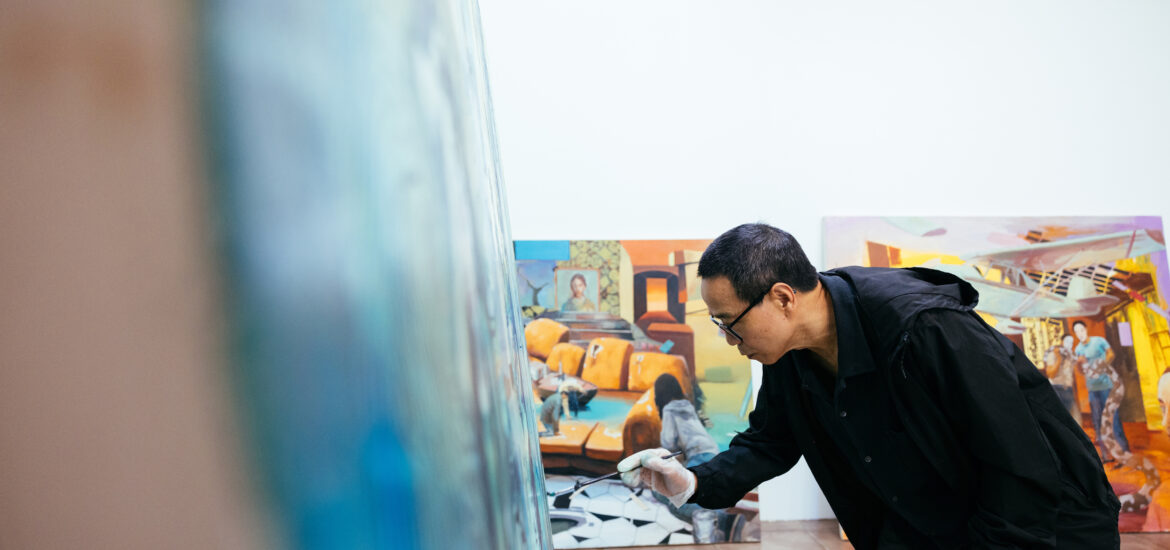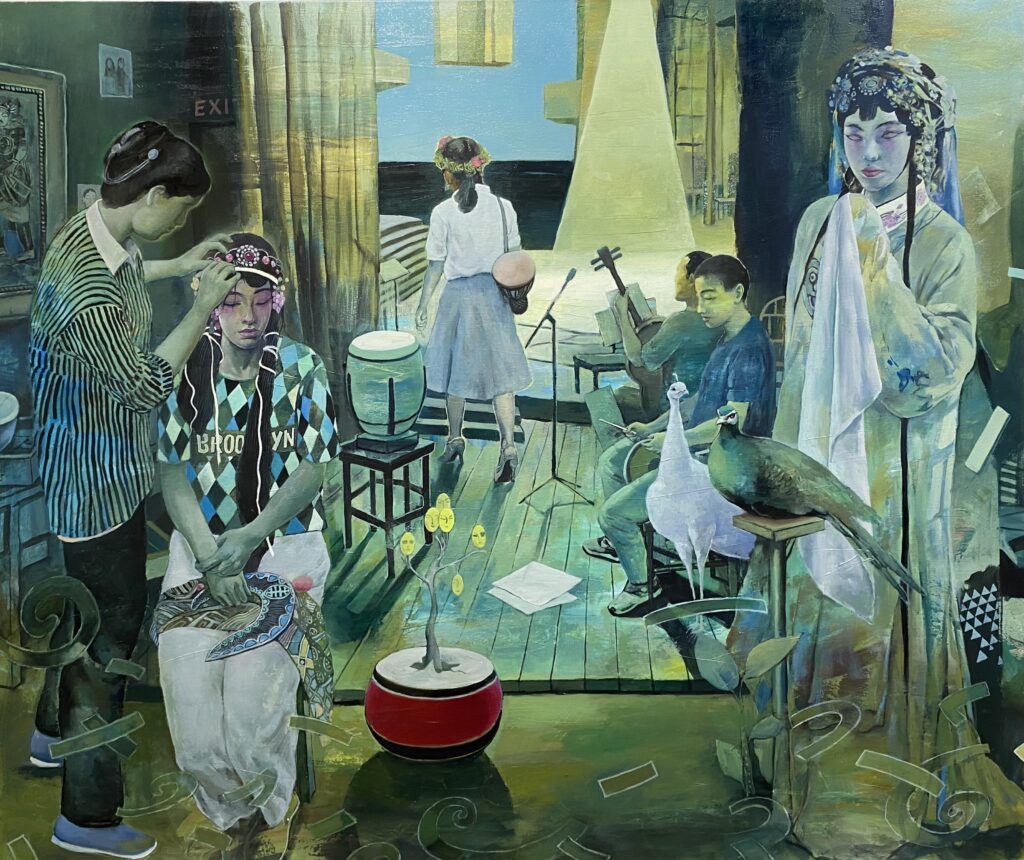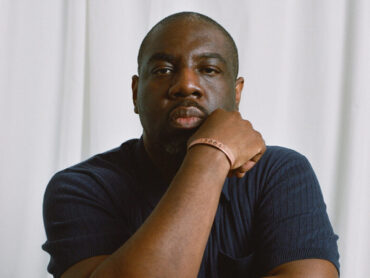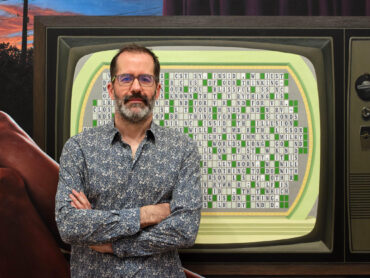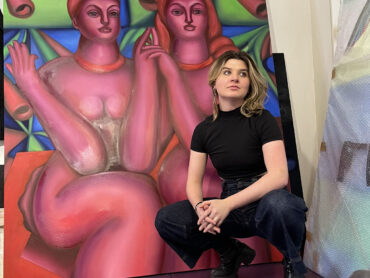In October 2022, I combed through the list of upcoming artists for the Fountainhead Residency in Miami to see whom they would host for 2023. It was there that I first came across Furong Zhang’s work. I was entranced by his paintings depicting figurative scenes with various individual plots and hidden imagery. It made me curious to learn more about the story the artist was expressing and the artist himself. I wanted to understand it, so I anticipated his visit to the residency to see the works in person.

Furong Zhang at the Fountainhead Residency Photo: Courtesy of Portray Magazine
Furong’s work meshes recollections from different moments into one flowing image on the canvas. He assembles realms of subliminal undertones, divulging a story of his past experiences, views, dreams, and hopes, sometimes using iconography and mythological symbols to present to the viewer artwork that speaks about socio-political challenges, his journey of immigration from China to the United States and his voyage in life.
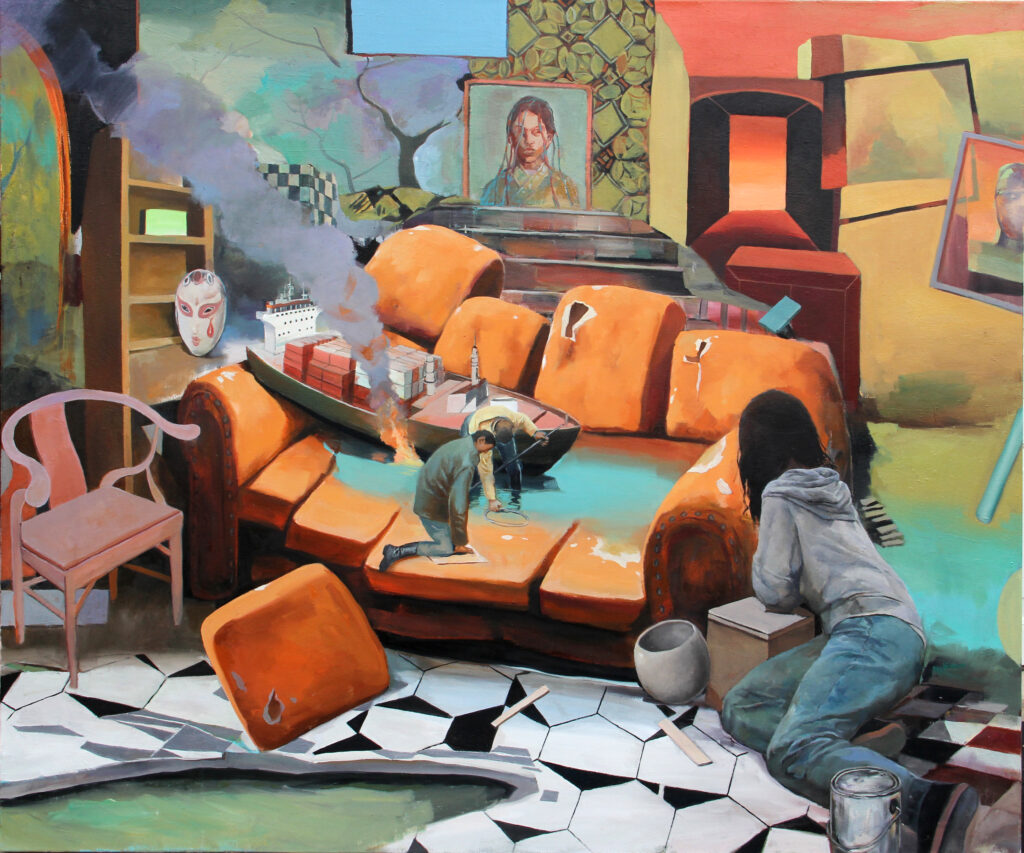
“Ship on a Coach” Photo: Courtesy of the Artist
He likes his work to create an emotional feeling for the viewer, which stems from the background of his personal experiences. His works are furthermore intriguing as you realize what you are looking at is a snapshot of a bigger picture happening before the canvas begins and after the canvas ends.
Furong explains, “I put emotion as background to my artwork. When I create, what am I contributing to the artwork? I am not only directly saying what I have experienced; I want to create feelings as my background and find a different way to present the history of what was. It’s more valuable than just a documentary. It has a more cultural meaning.”
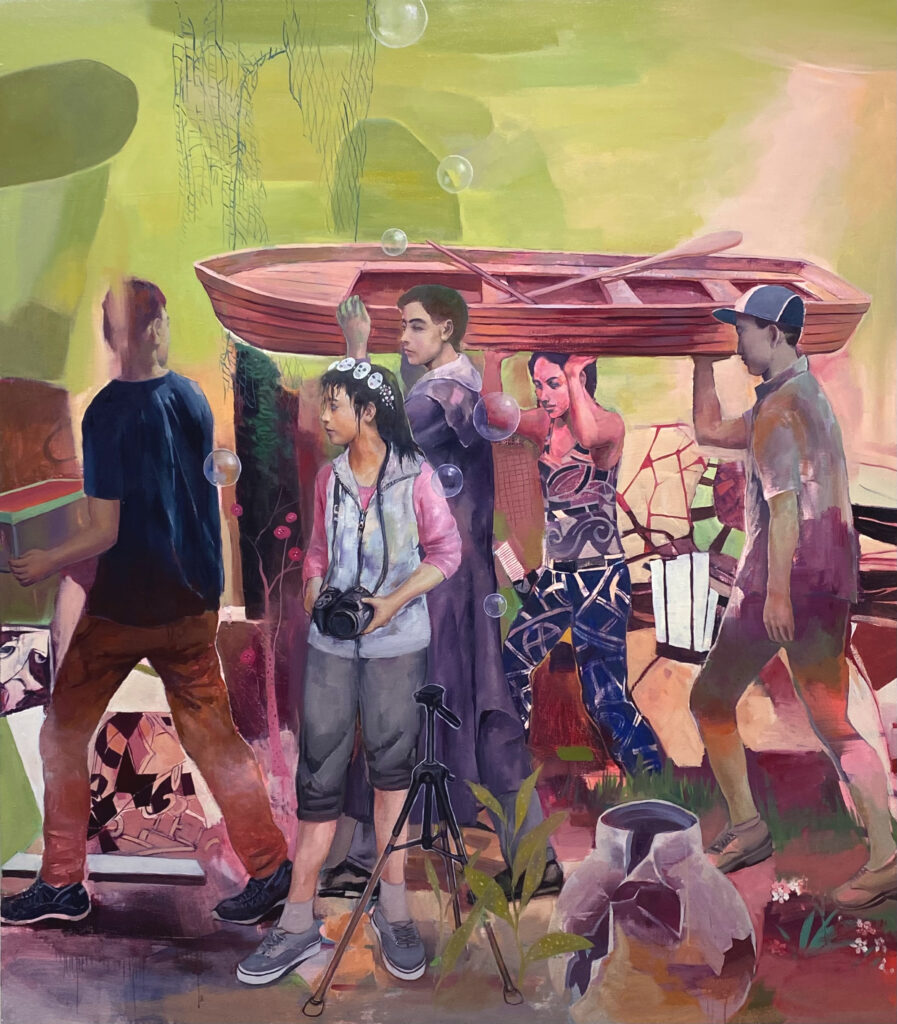
” Catch the Tide” Photo: Courtesy of the Artist
He was born in Shanghai, China, in 1956. His father was a factory head, and his mother worked for an electricity company. He was the youngest of three brothers. Furong encountered tribulation from an early age. At three years old, his parents, too busy to care for him, sent him to his grandmother’s to live for a year in the countryside. China was experiencing the Great Famine; Furong recalls, “Hunger is the only memory I have left of that time. Around 20 million people perished from that.”
When I look at Furong’s work, I feel the viewpoint of someone who has endured calamities and uncovers reasons to dispatch messages of hope and encouragement for all that have gone through hard times, seeking a path of positivity in chaos.
Furong lived through the cultural revolution and was sent to a labor camp to work in the rice fields, having firsthand accounts to document a metamorphosis of an entire society when the process stripped the individuality of its citizens to create a single collective—eliminating appreciation for self-expression, individual possessions, and personal opinion.
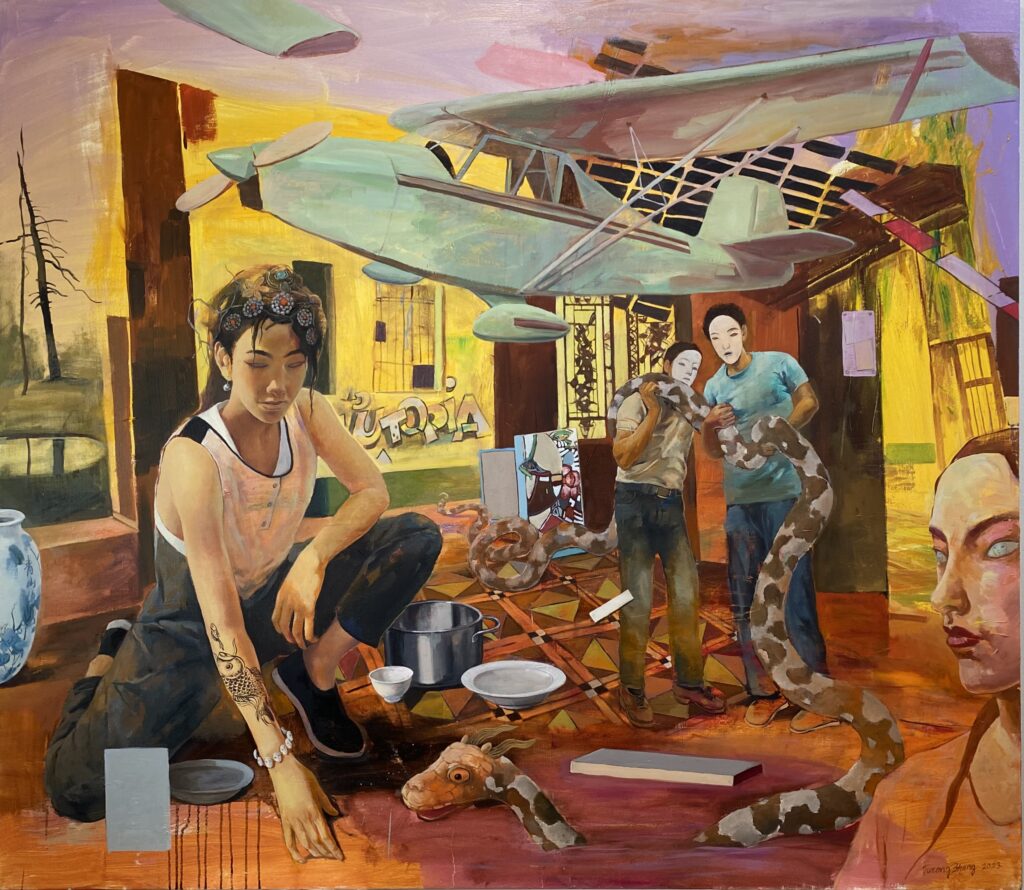
“Nuwa” Photo: Courtesy of the Artist
Before migrating to the U.S., Furong was an accomplished artist in China in his own right, initiating part of one of the first contemporary exhibitions in Beijing. ‘China Avant-Garde’ was the title of the exhibition. It was part of the New Wave of modern art in China that began in 1985. He was also a professor of art at Shanghai Normal University and taught students various things, from fundamental and figure drawing to oil painting.
Wanting a better life, he was lucky enough to obtain a student visa. He arrived in New York City hoping for the American Dream and quickly found that the tall skyscrapers and paved streets that greeted him were filled with the broken hopes of many who had tried and failed to rise for the better. He took entry jobs, delivered food, and utilized his talents, painting portraits in central park for twenty dollars per portrait. He found a job doing design while continuing his art career and created a new life step by step. He got married and started a family, where he lives in Pennsylvania, where he creates work in his studio and recently participated in a group show with Kravetz Wehby Gallery in New York City.
Reality and truth have different facets, depending on each individual. Sometimes it takes a dissimilar perspective to value what we have, who we are, and where we live.
“The emotional background of my work is based on trying to reconcile societal chaoswith a more quiet psychological space. I also particularly like the ideas of the ancient coming from a socialist country.”
“Green Sage” Photo: Courtesy of the artist
PM- You create microcosms in interior spaces. Is there a specific meaning you allocate to certain interior spaces?
FZ- I see all the spaces I create in my paintings as stages in which characters and objects become symbols. Specific spaces may reference certain experiences or memories, but I also see the interior spaces as shifting and often undefined at the edges as if they are open. Even with my interior spaces, I am inspired by the Chinese gardens’ philosophy that every step forward is a changing scenery.
PM- There is a lot of symbolic representation in your paintings. Do you set up the idea of what you wish to express in a work before you begin or freestyle? What are you feeling at that particular moment?
FZ- My works often start from an abstract feeling or mood, color combinations, or a specific figurative scene that catches my eye or comes to mind. Through multiple sketches, I put together different images from my archive of reference photos I’ve collected over the years. I made up characters to fit certain actions or loose narratives and played around with different combinations of objects and scenes that created different symbolic meanings.
Many times I ‘break’ images visually and compositionally to further act as a reference to emotions or events.
I plan my paintings beforehand, but by the time I consider a piece finished, it will have undergone several changes while retaining echoes of its previous version. My process of change and layering feels symbolic to my work, with many layers of paint buried under new images and colors, with varying degrees of opacity.

“Red Delusion” Photo: Courtesy of the Artist
PM-There is stillness amid chaos in your paintings. Can you tell us about that?
FZ- The emotional background of my work is based on trying to reconcile societal chaos with a more quiet psychological space. I also particularly like the ideas of the ancient Chinese philosopher Lao Tzu, who viewed the world as a duality whose elements are mutually contained, interdependent, and mutually transformable. As he once said,
“The the largest square has no corners,
The greatest vessel takes the longest to finish,
The greatest music has the faintest notes,
The Greatest Form is without shape.”
When I try to show chaos in my works, I want to express a way of the world—-where the compression of memories and events becomes a sort of stillness.
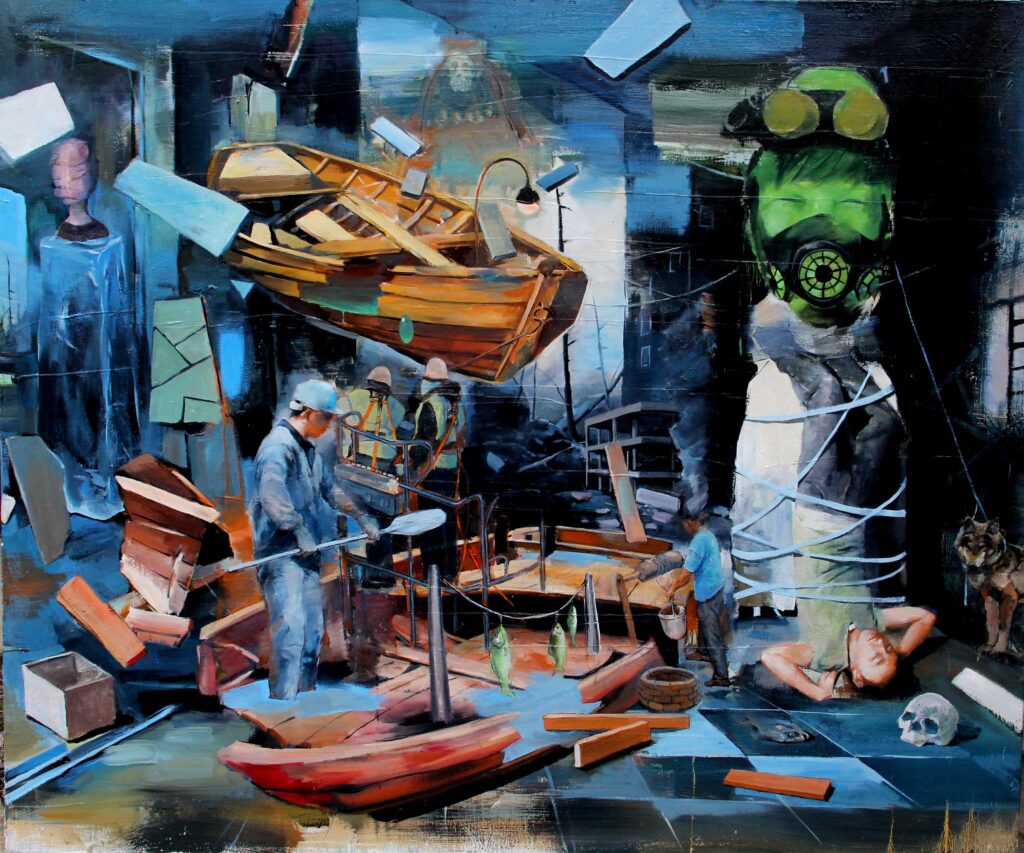
“Blue Voyage” Photo: Courtesy of the Artist
PM- Tell us a little about your childhood and early memories in China.
FZ- I was born in Shanghai, China, in 1956. when I was in the third grade of elementary school, the Cultural Revolution started in 1966. Normal schools, factories, stores, and all societal systems stopped operating as usual, and it was a chaotic and violent time. School became mostly for learning propaganda. Individuality was not valued. Most Western and traditional Chinese cultures were banned (and artifacts burned). The Cultural Revolution continued for ten years, during which I grew up. I’ve loved drawing since I was little, acting as a form of escapism to create my inner worlds.
PM- How was your experience moving to the U.S. in 1989, and what do you perceive has changed in the U.S. regarding the treatment of immigrants since then?
FZ- Before I moved to the U.S., China started to open its doors a little, and we needed to learn more about the Western world and culture. So when I came here in the first couple of years, the ways of thinking and behavior patterns were a huge difference and gave me a culture shock. I felt maladjusted and confused. I was lucky to meet many kind people that I am grateful for.
Unfortunately, I also experienced racism for the first time in the U.S. through discrimination based on other reasons (such as social class, gender, and age) were common in China, it was the first time I became distinguished as ‘an Asian person,’ with its preconceived notions of stereotypes, within the mix of people in the U.S…
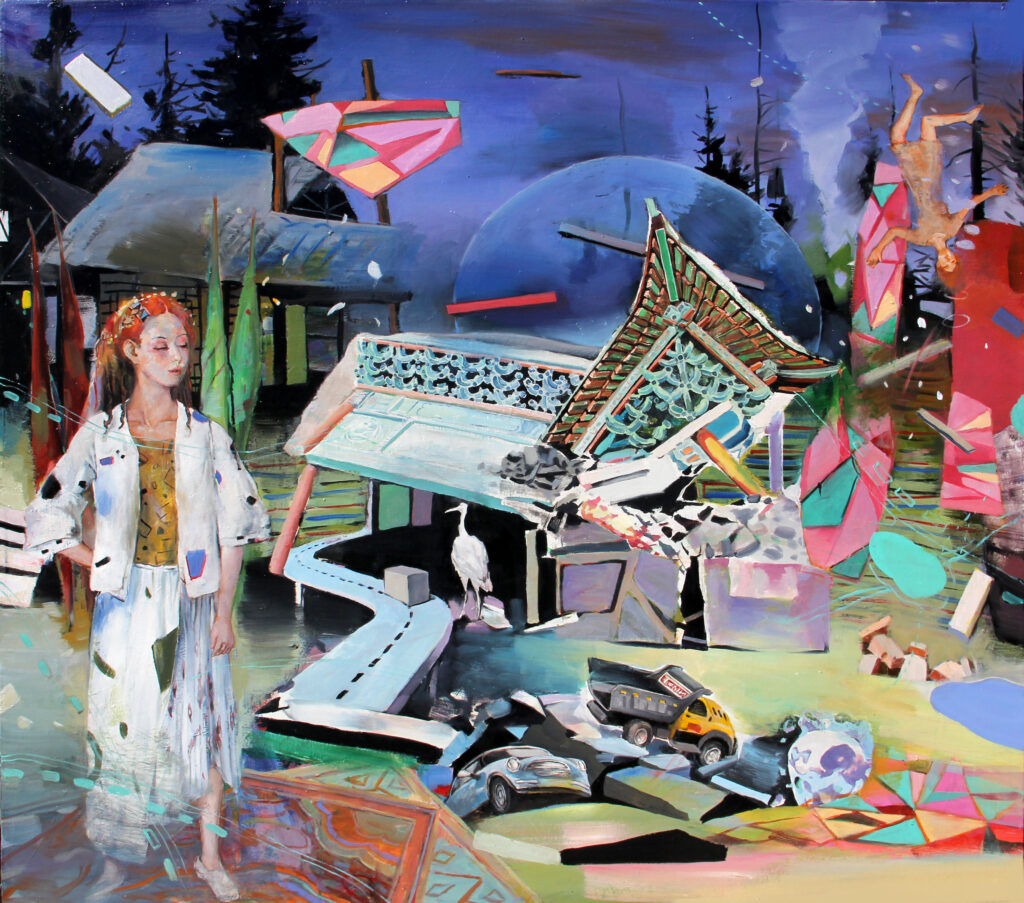
“Cracked Temple” Photo: Courtesy of the Artist
PM- How was the re-education movement, and what was it like to be sent by the government to farms and labor?
FZ- In the spring of 1975, when I was 18, due to political orders, I was sent to a farm on an island outside Shanghai to work, where I resided for nearly three years. The conditions were harsh, and the physical activity was difficult. I was on a huge farm with around 30,000 people, most of them aged around 16 to 20-something years old. We worked on rice fields and planted cotton, wheat, and vegetables. When winter came, we had to dig the river and canal with shovels. We weren’t allowed to leave or do anything else.
PM- Did every youth have to experience this, or was this a random selection? Were there other labor programs aside from farms?
FZ- The movement of being sent to the farms began in the 1950s and peaked during the Cultural Revolution. Besides the farms, youths were sent to the countryside villages, lacking food and harsh living conditions. There were more than 20 million young people, and one-tenth of the urban population went to the countryside. Almost every urban family had to send at least one child to the country or farm.
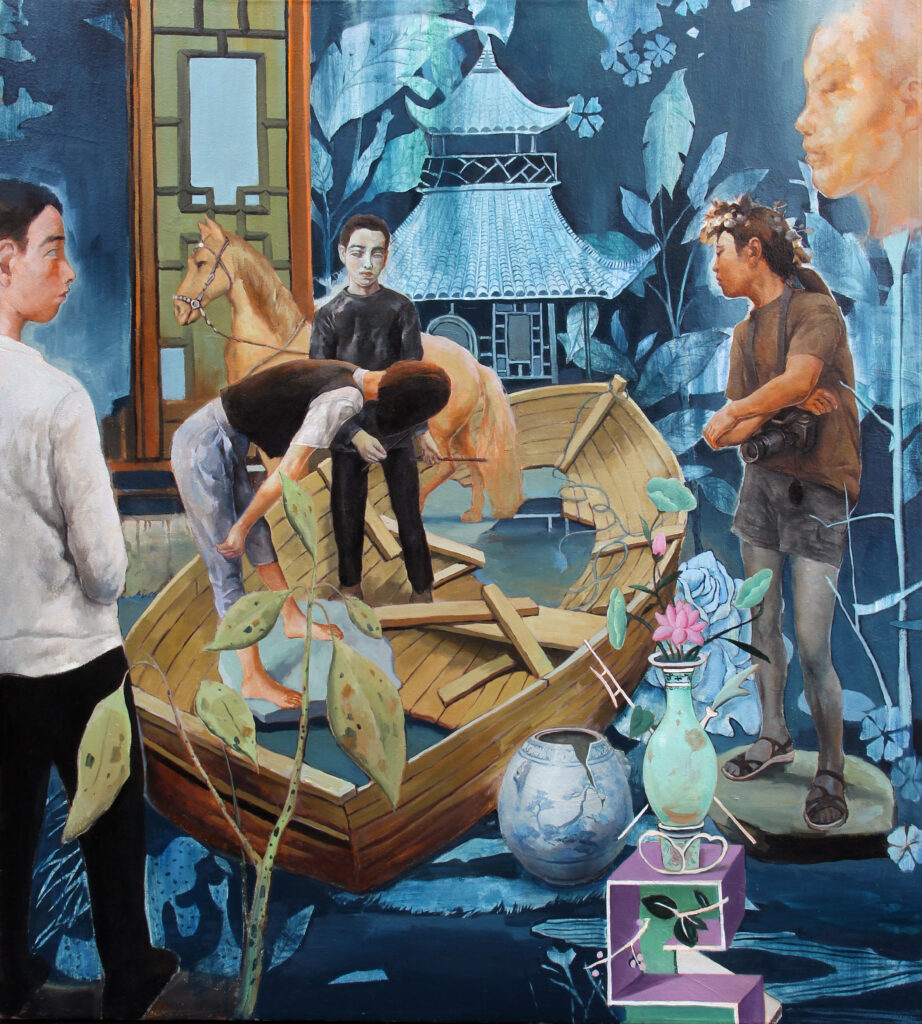
“Porcelain Garden” Photo: Courtesy of the Artist
PM- What are the contradictions you have found between mythology and reality in your personal experience as a first-generation immigrant?
FZ- I mostly think about the myth of the American Dream, the hope many immigrants come to the country with. At least in my personal experience, it was a collision of more utopian visions with the reality of American society and the notion of belonging and assimilation at the time. Those psychological contradictions are what I try to represent in my paintings, as well as in-between spaces between myth vs. reality that feel more nuanced than a duality.
PM- How did your experiences in China shape you, and have they made you appreciate our opportunities and freedoms in America?
FZ- My experiences in China have made me think about how the relationship of a government and society to its citizens should be. When I was in China, the government emphasized collective obedience and did not care about expressing individuality. Coming to America, individuality seemed more valued in society. I appreciate the freedom of personal expression here compared to China, especially for artists. My memories of the early half of my life in China have formed my backstory, and while I cannot separate me from my experiences; I feel distant from them now due to time. When I try to show chaos in my works, I want to express a kind of way of the world—- where the compression of memories and events becomes a sort of stillness.
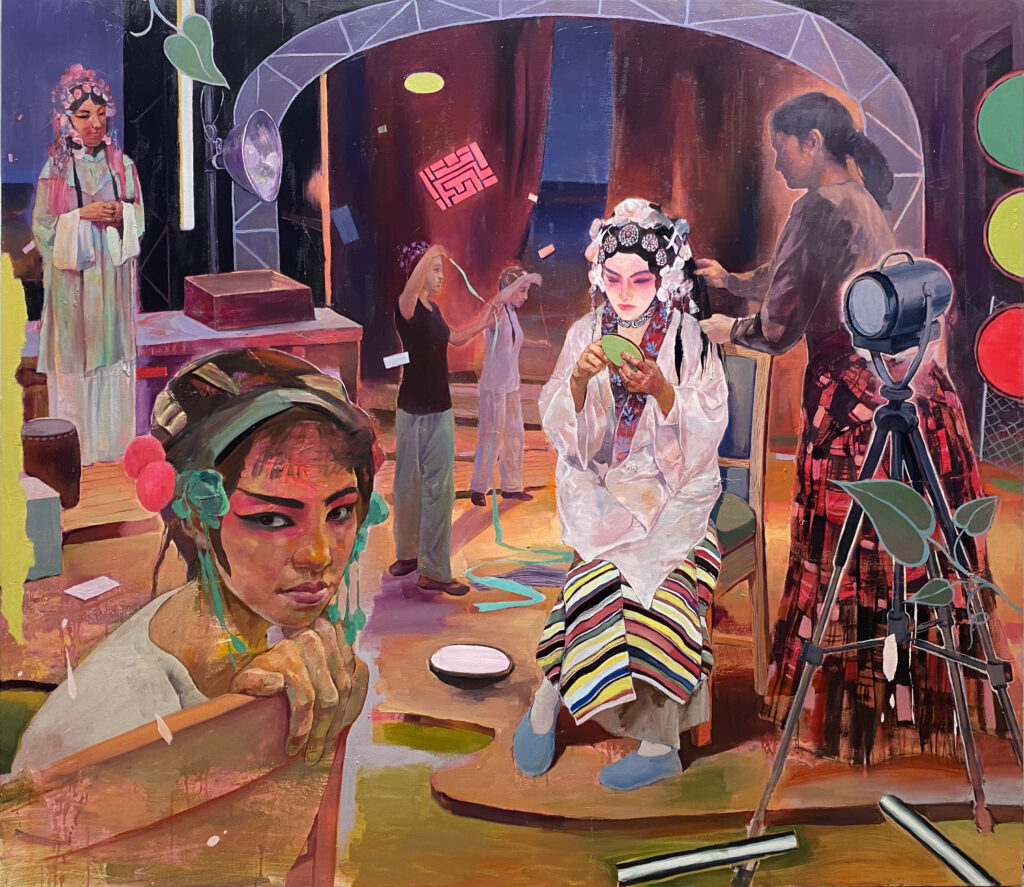
“Back Stage” Photo: Courtesy of the Artist
Encountering famine, hard labor, immigration, and prejudice, yet still finding the good in people and a reason to smile and thrive, makes Furong’s message in his works memorable, denoting the truth of what was, with scenes of what could be.
As Lao Tzu states, “Kindness in words creates confidence. Kindness in thinking creates profoundness. Kindness in giving creates love.”
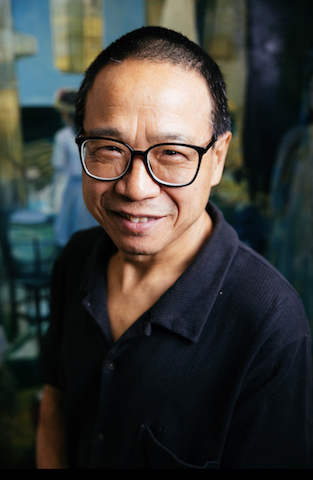
Furong Zhang Photo: Courtesy of the Artist
